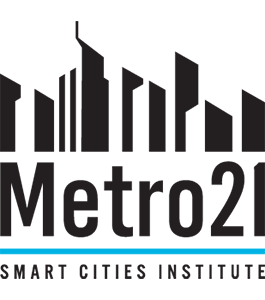
Understanding the Pittsburgh Water and Sewer Authority (PWSA) Lead Sampling Data
Lead is a neurotoxin that is harmful to human health, with negative health effects exacerbated in children under five years of age. Lead was a common material used in drinking water piping (i.e., service lines connecting a house to the street, and interior plumbing) and solder, paint and in gasoline among other industrial processes and household products until the 1970s and 1980s. While no longer used as widely, lead remains in urban environments, and human exposure is still a risk.
Pittsburgh Water and Sewer Authority (PWSA) has been actively managing lead through its corrosion control program for many years. However, recent results (2016 and 2017) of mandatory sampling indicated elevated levels in more than 10% of the test locations. As with many water utilities, PWSA has insufficient information on areas of the system that are at higher risk due to presence of lead piping or the use of lead-containing fixtures in homes. Compliance testing locations may be insufficient to identify potential hot spots; however, the extensive customer-initiated testing provides much more data. The project involves collaboration with PWSA on analysis of their historical data and use of their extensive recently collected data to identify regions of the city at higher risk of exposure to lead in drinking water.
Identifying communities that are at a high risk of experiencing adverse health effects of lead in drinking water will require integration of multiple types of data into statistical models and decision support tools. Novel techniques to assess lead in drinking water are needed as are new methods to assess the value of multiple potential interventions in communities. In this project, water infrastructure information including service line pipe material, corrosion control activities, and source water characteristics will be collected from partner utilities in Southwestern Pennsylvania. Water lead concentration data will be integrated with socioeconomic, demographic and household level infrastructure data. This will produce databases and associated data tools to enable application of machine learning and statistical modeling approaches to enable identification of regions or systems at risk of elevated lead levels in drinking water.
Project Update (April 2020)
This work consisted of two phases:
Phase 1 - develop a statistical model to assess the uncertainty associated with regulatory compliance assessments made under the LCR.
Phase 2 - develop an exposure assessment model to evaluate the intersection of multiple sources of lead within a water utility to identify neighborhoods where elevated drinking water lead levels are potentially coincident with other sources of lead.
Therefore, locations with elevated water lead levels can be prioritized based on co-occurrence with other sources of lead and presence of susceptible populations.
WEBSITE:
PARTNERS:
FACULTY:
Jeanne VanBriesen (PI)
Duquesne Light Company Professor, Civil and Environmental Engineering and Engineering and Public Policy, Carnegie Mellon University
Jared Cohon
President Emeritus and University Professor, Civil and Environmental Engineering and Engineering and Public Policy, Carnegie Mellon University
Mitchell Small
H. John Heinz Professor, Civil and Environmental Engineering and Engineering and Public Policy, Carnegie Mellon University
GRADUATE STUDENTS:
Sara Schwetschenau
Graduate Student, Engineering and Public Policy and Civil and Environmental Engineering, Carnegie Mellon University
